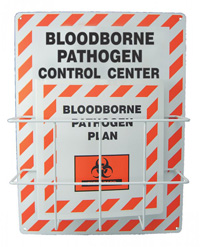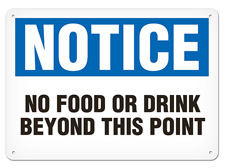| The Home page of ILPI's Safety Data Sheet (SDS) Resource, the leader in SDS information since 1995! | |
| The history and philosophy behind this resource. | |
| A curated collection of books and reference materials concerning Safety Data Sheets and closely related topics. | |
| Paste your plain text SDS into the SDS-Demystifier, and it will be converted into a hypertext-enriched document with links to detailed explanations of each key term. | |
| An extensive list of frequently asked questions about Safety Data Sheets including regulations, content, compliance, and more. | |
| A humorous take on Safety Data Sheet jargon. Fill in the blanks on our entry form to generate a personalized Unsafety Data Sheet to share with your coworkers. | |
| Since 1995, we've maintained this massive curated list of the best places to find Safety Data Sheets on the Internet. | |
| You are here! Way more than a glossary, this hypertext-enhanced resource covers hundreds of SDS-related terms and expert knowledge. Each entry includes both the SDS relevance and links to additional authoritative resources. | |
| Archived results of Safety Data Sheet related polls taken by some of our millions of site visitors | |
| The OSHA regulations behind SDS regulations, including the inspection guidelines and over 400 official interpretations letters under the Hazard Communication Standard | |
| Commercial suppliers of SDS authoring and management software as well as cloud compliance services. | |
| Commercial companies that will create SDS's for your specific needs as well as SDS translation companies. |

Safety signs, banners, and scoreboards? Get yours at Safety Emporium!
Definition
- Hypoglycemia is a medical term for a lower than normal level of sugar (glucose) in the the blood.
- Hyperglycemia is a medical term for a higher than normal level of sugar (glucose) in the the blood.
Additional Info

Safety Emporium carries bloodborne pathogen compliance centers and related compliance materials.
Hypoglycemia can be a dangerous condition because glucose is the major source of energy for the brain. Lack of glucose, like lack of oxygen, produces brain damage or even death if the deficit is prolonged. Hypoglycemia can occur when one has inadequate glucose intake or if a diabetic injects too much insulin (a hormone that regulates the blood glucose levels). These situations are common in people with diabetes who receive too much insulin or who don't eat enough.
Hypoglycemia starts to cause the following symptoms when glucose levels fall below 50 milligrams per deciliter (mg/dL):
- Sweating
- Shakiness, tremors, convulsions
- Anxiety, nervousness
- Pallor, coldness, clamminess
- Hunger
- Dizziness, confusion
- Headache
- Cloudy vision
- Abnormal behavior
- Loss of consciousness
Hypoglycemia that is severe enough to cause seizures or unconsciousness can ususally be reversed without obvious harm to the brain. Cases of permanent neurological damage usually involve prolonged, untreated unconsciousness or interference with breathing.
Books Available
- "Hypoglycemia for Dummies," Second Edition, Paperback, 288 pages, 2007. Estimated price: $11.22. Info and/or order.
- "Hypoglycemia: The Classic Healthcare Handbook" , Paperback, 256 pages, 2002. Estimated price: $14.99. Info and/or order.
- "Do's & Dont's of Hypoglycemia: An Everyday Guide to Low Blood Sugar Too Often Misunderstood and Misdiagnosed!" , Paperback, 216 pages, 2017. Estimated price: $11.29. Info and/or order.
SDS Relevance
Certain materials, such as manganese dioxide and ethanol (used as an antidote for ethylene glycol poisoning, among other uses), can cause hypoglycemia if ingested. Accidental ingestion is a rare route of entry for many chemicals, and usually comes about from poor workplace/laboratory hygiene habits such as eating, drinking or smoking around hazardous chemicals or failing to wear gloves and/or wash hands after handling chemicals.
The health effects of a chemical are found in Section 11 (toxicological information) of the Safety Data Sheet. Always review your SDS before working with a material for the first time so you know what hazards to expect, signs of exposure, and measures you can take to protect yourself.
Further Reading

Ensure safe laboratories with laboratory signs and labels from Safety Emporium.
- Low Blood Glucose (Hypoglycemia) at the NIH's Diabetes and Digestive and Kidney Diseases Health Information Center is full of comprehensive information.
- Hyperglycemia (High Blood Glucose) at The American Diabetes Association.
- 14 Low Blood Sugar Symptoms, Dangers, Causes, and Treatment at MedicineNet. They also have additional presentations and info.
- Hypoglycemia: Symptoms & Causes, part of a multipage resouce at MayoClinic.com.
- Hypoglycemia (Low Blood Sugar) at eMedicineHealth.
See also: Concentration.